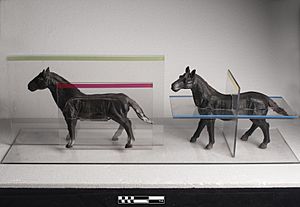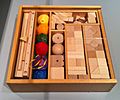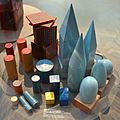Educational toy facts for kids
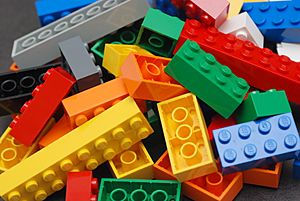
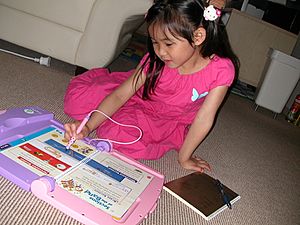
Educational toys are special playthings made to help kids learn and grow. They are designed to teach you new skills or facts about different subjects. Think of them as fun tools that make learning exciting!
These toys often make grown-up activities or objects simpler and smaller for kids. For example, a toy kitchen helps you learn about cooking. A toy car might teach you about how things move.
Not everything you learn from is an educational toy. A stick or a rock can be fun to play with, but they aren't designed to teach. Educational toys are made on purpose to help you learn. They aim to boost your brainpower, feelings, or physical skills. Today, many toys are made with your learning and development in mind.
Contents
Why Play is Important for Learning
Play is often called "the work of children." It's how kids explore the world around them. When you play, you practice new skills and understand new ideas. This includes copying what others do, figuring out why things happen, and solving problems. Play helps you think in new ways.
As you get older and learn more, the skills you can pick up expand. Play is super important for how your brain grows. It also helps with your feelings and how you get along with others.
Choosing the Right Educational Toys
Teachers often pick toys that fit a child's age and what they already know. They use toys to help kids learn better. Many educators believe in open-ended play. This means toys that can be used in many different ways.
Toys like simple wooden blocks are great for younger kids. They can learn about how things fall or how to stack. This also helps with hand-eye coordination. For older kids, building toys like Lego or puzzles are good. They challenge you to improve coordination and understand shapes.
More complex building sets with moving parts can help you understand how machines work. The best educational toys are those that match your age. They help you learn the most.
How Educational Toys are Marketed
The toy business is huge, making billions of dollars each year. When you see ads for "educational toys," it means they are trying to show parents the learning benefits. Toy packaging often lists skills the product claims to improve.
However, it's good to remember that sometimes simpler, cheaper toys can be just as helpful. What matters most is how you use the toy. Also, how much adults get involved and guide you can make a big difference. Your own interest and smarts also play a big part.
Examples of Educational Toys
Here are some types of educational toys:
- Building toys: These help you create things.
* Toy blocks * Lego * Meccano * Engino
- Science kits: For exploring science experiments.
* Chemistry sets * Microscopes * Thames & Kosmos kits
- Electronic toys: These often have screens or buttons for learning.
* Speak & Spell * LeapFrog products * VTech products
- Models of real objects: These help you understand how things look or work.
* Model aircraft * Model railroads * Model cars * Playmobil scenes
- Musical instruments: For learning about music.
- Physics toys: These show how physics works.
* Euler's Disk * Tippe top * Fidget Spinners
- Robot and robot kits: For building and programming robots.
* Lego Mindstorms * Kasey the Kinderbot
- Puzzles: These challenge your problem-solving skills.
Images for kids
-
Children’s Games, by Pieter Bruegel the Elder (1560)
-
Inuit children's doll
-
Simple computers and game consoles that focused on children's learning started appearing in the 1980s, like this VTech Socrates from 1988.
-
Cloud chamber, part of the Gilbert U-238 Atomic Energy Laboratory, 1950
-
The rudimentary Geniac computer lacked any memory (1955)
-
The Minivac 601 featured 6 electromechanical relays and a unique motorized display (1961)


